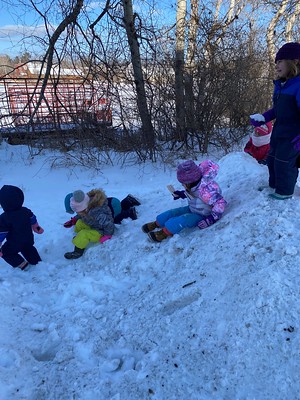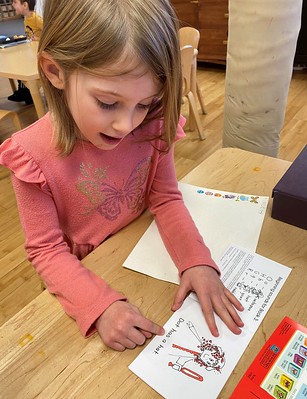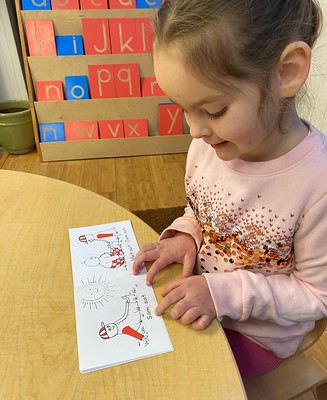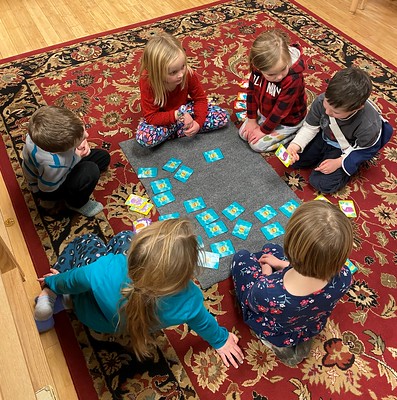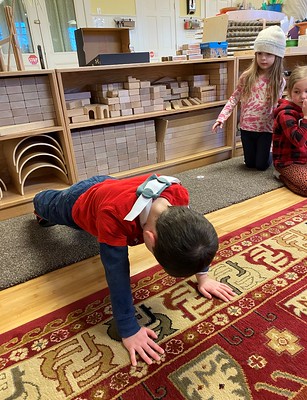Mammals, mammals, everywhere!! Rose brought a large collection of stuffed mammals and the children either chose an animal by giving the sign, or having Rose show the sign of the animal they chose. Rose then read and signed the Piggy and Gerald story “Waiting is Not Easy” by Mo Willems. Piggy has a surprise for Gerald and he has to wait, and wait, and wait, and wait, which he finds is really not easy.
As we are in the thick of winter we have been talking about animals and what they do in winter. We discussed hibernation, migration, and adaption. The children shared that the challenges in winter are lack of food because plants are no longer growing and much of what remains is buried under snow so it is difficult for animals to find and eat. We discussed how animals stay warm in winter. The children said we stay warm in our houses with fires/heat and warm clothes for both inside and out, but animals don’t have heated homes so they need to stay warm in other ways. Some animals, like bears, will eat and eat and eat all fall and build up a layer of fat under their skin. Mammals are also covered in hair/fur/wool that helps to keep them warm. And some mammals hibernate, slowing their heartbeats down and curling up in burrows or dens where they can conserve their heat and energy. We took turns holding pieces of ice in our bare hands, then holding ice with a layer of insulation – fat, wool, fur, or feathers.
The children noticed some animal tracks outside the back fence, so we went to check them out. Their original guess was that they were deer tracks, but upon examination and some contemplation, we observed they were too close together and guessed that they were likely dog tracks. While exploring they observed some other tracks and made several guesses about what they might be, then we used deductive reasoning to guess that they were squirrel tracks, as they went to and from trees and followed the big feet in front, small feet in back pattern of squirrels. We decided to see if we could find some tracks down in the back field so took an impromptu field trip out back. Unfortunately we didn’t find any fresh tracks, but we had fun making a whole bunch of our own!!
The children love drumming, so we watched 4 videos of street drummers who use buckets and/or pots, pans, and random items to drum on. They LOVED the videos and got their groove on, dancing and moving, and drumming and banging along with Gordo, Damat, Dario Rossi, and the group of bucket drummers STICKSTOFF. We pulled out and tested a variety of items the students could tap on and everyone chose something to use for a bit of percussion time. It was too loud with EVERYONE drumming at the same time, so we cut that short, but left the items out for children to use one or two at a time. We have some pretty skilled drummers in our class with great rhythm and a good ear.
Kindergarten students chose a mammal to write about. They drew a picture of their chosen mammal and then added at least one detail about that mammal. They did some addition work, completing addition facts from 1 to 9. Working through an addition book of 9 pages of addition facts, with one+, two+, three+, all the way to 9 addition facts, they observed patterns and strengthened their understanding of working through addition problems. They were introduced to nouns as parts of a sentence. They learned that a noun is a person, place, or thing, were given multiple examples, listened to/read some sentences and identified the nouns, then went on a treasure hunt around the room to find nouns then sound out and write down the nouns they found. There was also a lot of reading going on! Those who are interested in keeping track of how many books or sight word lists they have read have started sticker charts so they can count up all their reading.
During science the children performed feats of strength, using their muscles to lift heavy objects, run in place, do push ups, yoga poses, squats, planks, and other muscle building exercises. They loved showing off all those they already know, then testing their abilities performing. We watched two videos about muscles, the first that highlighted the various skeletal muscles, and the second that described different types of muscle, why we need them and how they work, and how to keep them healthy.











